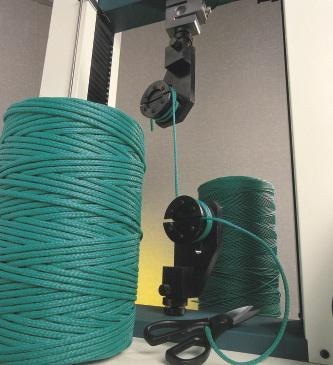Strength testing of ropes is extremely difficult as they have a tendency to break suddenly and unexpectedly. Due to their explosive nature, a suitable measurement system is required that can directly contact the rope and yet remains strong enough to endure these violent failures.
However, this usually means the measurement system is bulky and could prove hazardous when rope specimens undergo a violent break. In order to perform these types of tests, Tinius Olsen offers a non-contact video extensometer that is suitable for measuring strain.

Figure 1. Strength testing of rope
Tinius Olsen has developed a video extensometer, which is perfect for testing ropes on vertical or horizontal testing tensile testing machines since it uses a non-contacting technology. It can be appropriately located behind a clear plastic screen or placed away from the rope to avoid damage to the extensometer, even in case of aggressive rope break events.
High Resolution Strain Data
Moreover, since the extensometer does not contact the specimen, localized stress points are eliminated that could otherwise cause a premature breakage. The video image of the test includes the full high resolution strain data, and can be played again to support additional analysis, or could be retained as the permanent test record.
The video extensometer employs advanced high speed image processing, a high resolution monochrome camera, and cool lighting so that the point to point real-time video processing technology can achieve and surpass ASTM E83 Class B1 and ISO 9513 Class 0.5 accuracy. With constant measurement through compressive rupture or tensile break, the video extensometer is suitable for accurate, non-contact measurement of specimen strain.

Figure 2. Video extensometer
The video extensometer comes in two versions: one for low extension materials and one for high extension materials. The low extension version is supplied with a small field of view lens, while the high extension version comes with a general purpose lens.

This information has been sourced, reviewed and adapted from materials provided by Tinius Olsen.
For more information on this source, please visit Tinius Olsen.